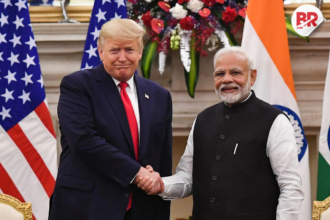
The Vizhinjam International Deepwater Multipurpose Seaport is more than just another infrastructure project—it’s a crucial player in India’s economic strategy.
Situated on the southern tip of India, this port is on the cusp of transforming the nation’s position in global trade. As the project nears completion, its potential becomes increasingly clear, not just for businesses, but for every Indian citizen.

India’s location is a prime asset. Situated near key international shipping routes, Vizhinjam Port is set to become a major transshipment hub, offering a vital alternative to global trade routes dominated by Colombo, Singapore, and Dubai.
But why does this matter? For starters, reduced logistics costs can make products cheaper for consumers, while helping Indian businesses compete more effectively on the global stage.
The Economic Ecosystem of Vizhinjam
While Vizhinjam Port will be a critical trade hub, its impact stretches far beyond just handling cargo. This seaport is poised to act as an economic engine, driving growth in sectors like warehousing, transportation, manufacturing, and skill development.
Imagine this: massive warehouses, bustling transportation systems, and industries flourishing around the port’s infrastructure. All of these will create job opportunities, draw investments, and make this region a hotbed of economic activity.
For example, the port’s proximity will attract companies to set up manufacturing and processing plants, making it easier to move goods across the country and around the world.
Local economies will thrive as new businesses open up, and workers with new skills will find opportunities in industries that support the port.
Today, at Vizhinjam, history, destiny and possibility came together as a 30-year-old dream of Kerala became India’s gateway to the world.
We are proud to have built India’s first deep-sea automated port. A future global transshipment hub. This is a triumph of vision, resilience… pic.twitter.com/343mjcNcAB
— Gautam Adani (@gautam_adani) May 2, 2025
Collaboration and Leadership: A Vision for the Future
One of the most promising aspects of the Vizhinjam project is the collaboration that’s made it possible.
The leadership from Prime Minister Narendra Modi, Kerala Chief Minister Pinarayi Vijayan, and business magnate Gautam Adani showcases how public-private partnerships can drive national progress.
Adani’s words, “Together, we sail towards a stronger, bolder India,” echo the sentiment that this project is not just about infrastructure—it’s about unity, vision, and the strength of collaborative efforts.
Despite political divides, the development of Vizhinjam Port has been a testament to what’s possible when governments, business leaders, and local communities come together for a common goal.
Overcoming Challenges: A Path Forward
No large-scale project is without its hurdles, and Vizhinjam has faced its fair share. Construction delays, environmental concerns, and community impacts have all been factors to address. But through careful planning and a commitment to sustainable development, these challenges are being met head-on.
In the end, the goal isn’t just about building a port—it’s about creating long-term value for the region and the nation. It’s a delicate balance of progress and responsibility, ensuring that development enhances the environment and society.
As the PM dedicates Vizhinjam Port to the nation today, my mind goes back to June 13, 2011 when the-then CM of Kerala Oommen Chandy and the Thiruvananthapuram MP Dr. Shashi Tharoor invited me to visit the site to set the ball rollinghttps://t.co/RsAQ9WN9aT pic.twitter.com/IE2ZkR7aUC
— Jairam Ramesh (@Jairam_Ramesh) May 2, 2025
The Future of Vizhinjam Port: A Stronger India
As the Vizhinjam International Deepwater Multipurpose Seaport nears full operation, it promises to play a pivotal role in shaping India’s economic future. This port isn’t just about moving goods; it’s about strengthening India’s position in the global marketplace.
With the potential to boost exports, reduce logistics costs, and create jobs, Vizhinjam is much more than a piece of infrastructure—it’s a symbol of India’s economic ascent.
Also Read Modi Just Opened Vizhinjam Port—And It Quietly Changes Everything












